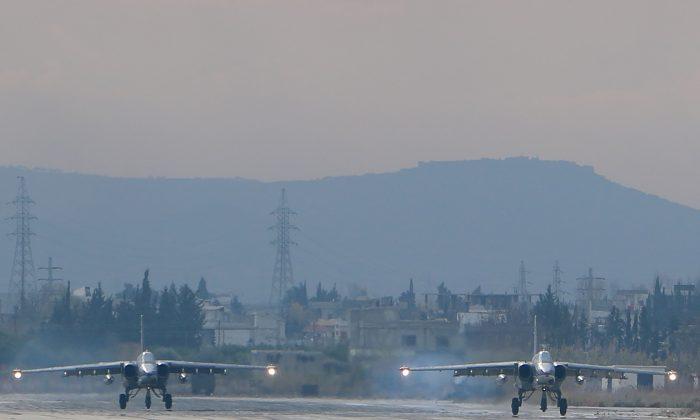MOSCOW—Moscow joined the fight in Syria to return to relevance in international diplomacy. It has succeeded by anyone’s measure—and Russia hopes to use its air power to dictate the terms of a cease-fire and prospective peace talks.
Russian warplanes have helped the Syrian army make broad advances and close in on the country’s biggest city, Aleppo. Meanwhile, the Western-backed opposition is fractured and weakened.
So as talk turns to a cease-fire, Syrian President Bashar Assad, Moscow’s sole ally in the region, is in a stronger position than he has been in years.
What’s more, Russia has cast itself as an indispensable global player that holds the key to the settlement of a nearly five-year conflict that has flooded Europe with refugees. And the United States can’t hope to push forward its agenda of ending the war without overtures to Russia.
Not that there aren’t challenges ahead for Russian President Vladimir Putin.
The campaign, Russia’s first military operation outside the former Soviet Union since the 1991 Soviet collapse, has demonstrated the new capability of the nation’s resurgent military and allowed Russia to test its latest weapons in combat for the first time.
In one example, the military tested its new long-range cruise missiles, firing them from all possible launch platforms—strategic bombers, surface warships in the Caspian Sea and a submarine near Syria.
Moscow has denied any intention to open more air bases in Syria in addition to the Hemeimeem air base in Syria’s coastal province of Latakia, the well-protected heartland of Assad’s Alawite sect. The Russian military says it makes little sense to allocate extra assets since it takes just 15 minutes for Russian warplanes from Hemeimeem to reach any area in Syria.
Russia began its air campaign on Sept. 30, nearly five years after the war began, and the impact soon became visible as Assad’s military launched a multi-pronged offensive. The main Syrian army efforts are now focusing on Aleppo, Syria’s largest city and commercial capital, which has been split between the government and its opponents since 2012.
In recent weeks, Assad’s troops backed by Hezbollah and Iranian forces have methodically cut supply lines, forcing more than 50,000 civilians to flee to the nearby Turkish border. Russian warplanes flying up to 70 sorties a day have maintained constant pressure on the anti-government forces, striking their strongholds and depots and chasing their convoys.
There are risks to the strategy, as can be seen in Russian-Turkish tensions after NATO member Turkey shot down the Russian jet. And in the crowded skies over Syria, U.S. officials say Russian pilots often perform risky maneuvers, flying extremely close to the U.S. warplanes.
Moscow and Washington have agreed to exchange information about air operations over Syria to prevent incidents, but Russia has pushed for broader coordination. Putin apparently hopes that engaging the U.S. in military-to-military cooperation in Syria could help ease the strain in relations and also cast Moscow as a power equaling the U.S.
Russian Foreign Minister Sergey Lavrov said last week that close coordination between U.S. and Russian military experts would be essential for securing a cease-fire. But Russia also vows to press its air assault against extremist groups, making clear that Moscow is in no rush to stop fighting.
Putin appears ready to gamble that things will keep going his way.






Friends Read Free